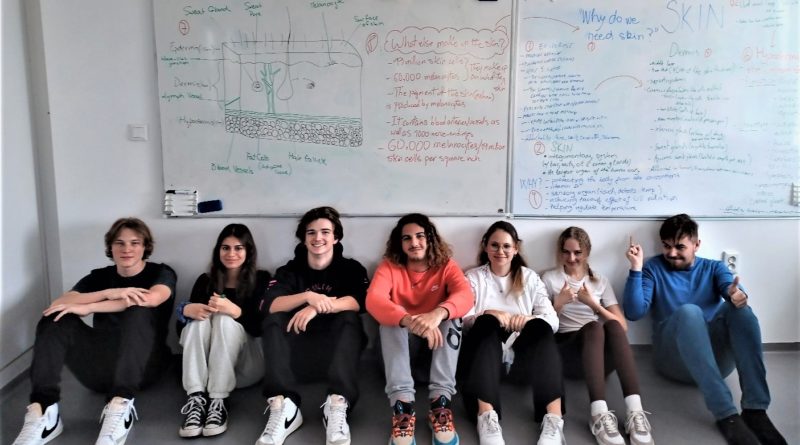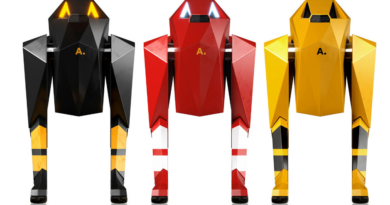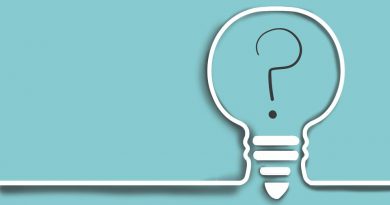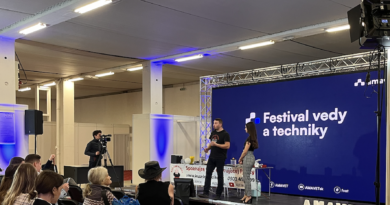By teaching others, we are learning ourselves
In September of this academic year, eight students of the American Academy began studying the course “Human Anatomy and Physiology.” The reasons why they chose this subject ranged from curiosity to better understand their body and what goes on in it, to using this knowledge to apply to universities.
During this time, students have completed several laboratory work on histology and practical work on medical diagnostics. They have learned how to perfectly photograph micro preparations of tissues, recognize them and give a comparative description. Looking at a large number of CT, MRI, ultrasound, radionuclide scanning radiographs of various organs, students trained to recognize organs, their condition (normal or pathological), analyzed the degree of organ damage and established the possible causes of this and consequences for the whole organism.
Anatomy is an interesting but difficult subject. Students need to process a large amount of information, understand, memorize and correctly use biological and medical terminology. How can this be done more efficiently and productively? We found the answer in the words of the ancient Roman philosopher Seneca: “By teaching others, we are learning ourselves.” We decided to test this in practice, studying the topic of the Integumentary system.
Each student was asked to prepare a public lecture “The Skin, Its Structure and Functions” as homework (without using Power Point presentations) and immerse themselves in the role of a real teacher for 10-15 minutes. “The main purpose of this assignment was for students to take on the role of a teacher, and teach the rest of the class, and how we should react when what we’re saying isn’t correct and someone has to correct it for us later.“ (Ben).
Student’s work was evaluated according to a number of criteria:
– posing a problematic (conceptual) question
– depth of understanding of the topic
– quality and ways of explaining the topic
– rationality and clarity in the use of the whiteboard
– inclusion in the explanation of previously acquired knowledge
– communication with the audience (feedback)
– reaction to sudden (provocative) questions and the ability to get out of the current situation
– self-evaluation (reflection): How well did I do my job? What can I improve? What have I learned? My feelings during the preparation and during the lesson. Is it easy to be a teacher?
All students showed maximum interest in the quality of the assignment.
Let’s look at some of their statements.
To the questions: “How well did I do my job?” and “What can I improve?” students gave the following answers:
” In my case, I’m personally a bit skeptical with how I presented my work and there are multiple factors linked to it. Although I spent quite a lot of time researching and writing my lecture, I think that there wasn’t enough preparation for me.” (Ben)
” I think the way I presented the material was good; I tried to speak loud and clear, though, maybe it was a bit fast. I’m satisfied with the material I included in the lesson–I only talked about the most important information.” (Ivana)
“For me personally, it’s always been told to me that I’m good at presenting, I have a good speaking voice, good posture, and I present something in an interesting way for a class to see. These are important things to have when teaching as you are effectively presenting for over 45 minutes each lesson for a year straight and that comes with a lot of preparation and work on top of that.” (Jakub)
“At the end of the day, I think my performance was not that bad at all…I explained the topic well… I was proud of myself.” (Lilly)
“For this lecture, I think my performance wasn’t bad…I got stuck once or twice in my notes and I was trying to talk quickly, so I rushed over my words. I was planning to interact more with the audience but because of the stress I forgot to do it at some moments of my lecture.” (Simona)
“My presenting would be better, more fluent. Maybe if I learned it at least a little bit more by heart, it would be a bit more entertaining than if I was reading it from a paper.” (Filip)
“Next time, there must be more preparation and further research.” (Ben)
“My interaction with students was poor. Next time I’ll have to ask them questions to see if they understand what I’m talking about and make sure what I’m talking about makes sense.” (Filip)
“If I was actually teaching I would’ve projected the fully done mind map instead of drawing it as that would leave a lot of free time open.” (Jakub)
Was this the first public speaking experience for our students?
The answer is ambiguous. On the one hand, “no”, because in different subjects students make various presentations, projects, and this way of working is not new for them. On the other hand, “yes”. It is one thing to act like a student and quite another to act like a teacher. It would seem that there is no difference: you perform in the same class in front of your classmates … It turns out that there is a difference. Here are how the students answered the question: “My feelings during the preparation and during the lesson.”
“I was a bit nervous which could have been a reason why it wasn’t very easy going.” (Filip)
“I was a little bit nervous, although I tried not to show it, but I think I was talking too quickly. I planned to interact with the audience more than I did and maybe write more things on the board- the important things.” (Lilly)
“Personally I am not interested in that kind of stress in having to manage students or making sure that everyone is on the same page and behind and fearing that I am a bad teacher and that is why certain students get worse grades than others.” (Jakub)
“I did try my best to answer the questions I got asked as much as possible with my knowledge but it was obvious that those answers weren’t enough, and I didn’t feel very good about that after my lecture.” (Ben)
“I cannot imagine being teacher, because how stressful it is just doing only one lecture brought enough stress for me, so I cannot imagine do them every single day.” (Adam)
So what is the difference between speaking as a student and as a teacher? Why did the “second” keep students in a state of great stress: responsibility, lack of right to make a mistake?
What did the students answer to the question: Is it easy to be a teacher?
“In my opinion it is hard to be teacher. I did not expect how much goes into preparation and execution of the lecture.” (Adam)
“Do I see myself as a teacher at some point of my life? No, I do not. I don’t think it’s the best job suited for me. It’s not horrible, but I don’t particularly enjoy it either. I don’t think I have enough patience for this type of job, but I do think it was a fun experience.” (Simona)
“I could see myself as a teacher; I already worked as a tutor, but I still have to improve a few things.” (Ivana)
“Do I see myself as a teacher one day? I do not. It is not something that I enjoyed that much and I want my job to fulfill me.” (Lilly)
At the end of all the presentations, together with the students, we discussed all the strengths and weaknesses, listened to all opinions, played out several ways to get out of problematic situations, and agreed with Lilly: “But it was a fun experience.”
Seneca was right.
By teaching others, we are learning ourselves.




